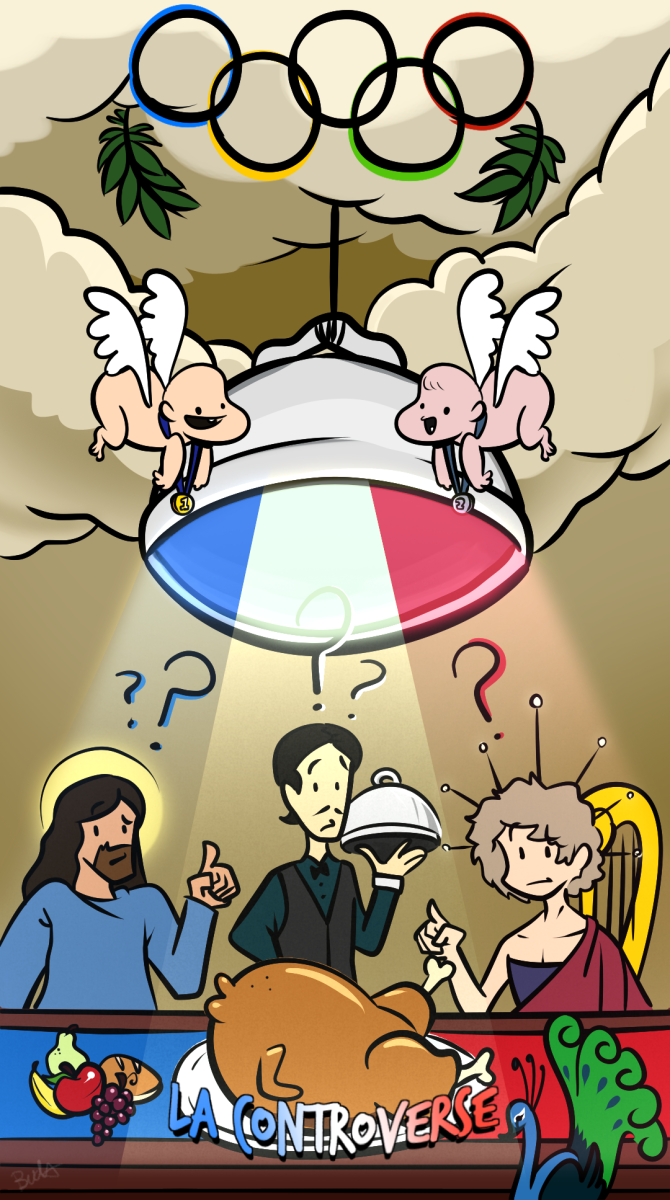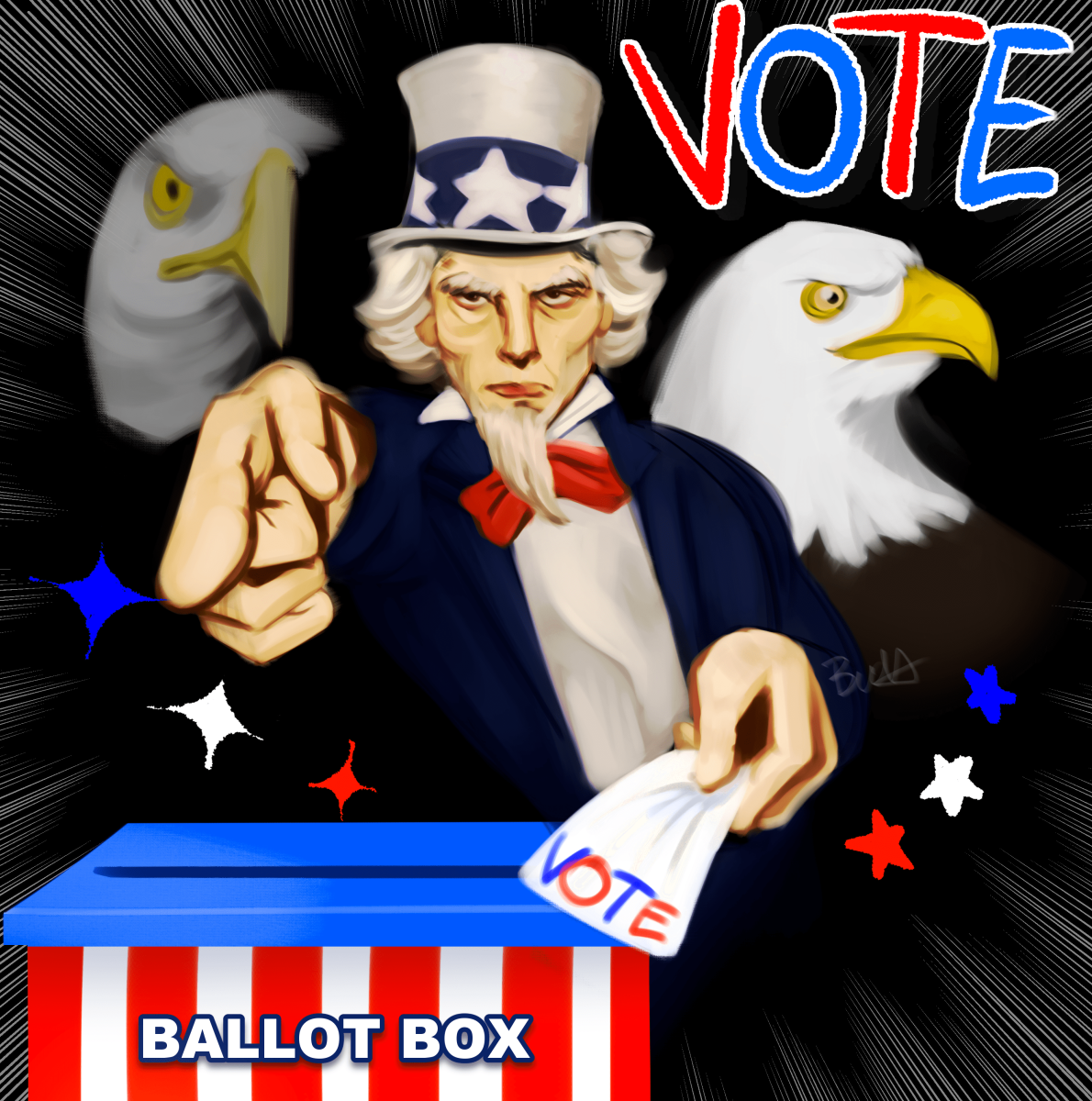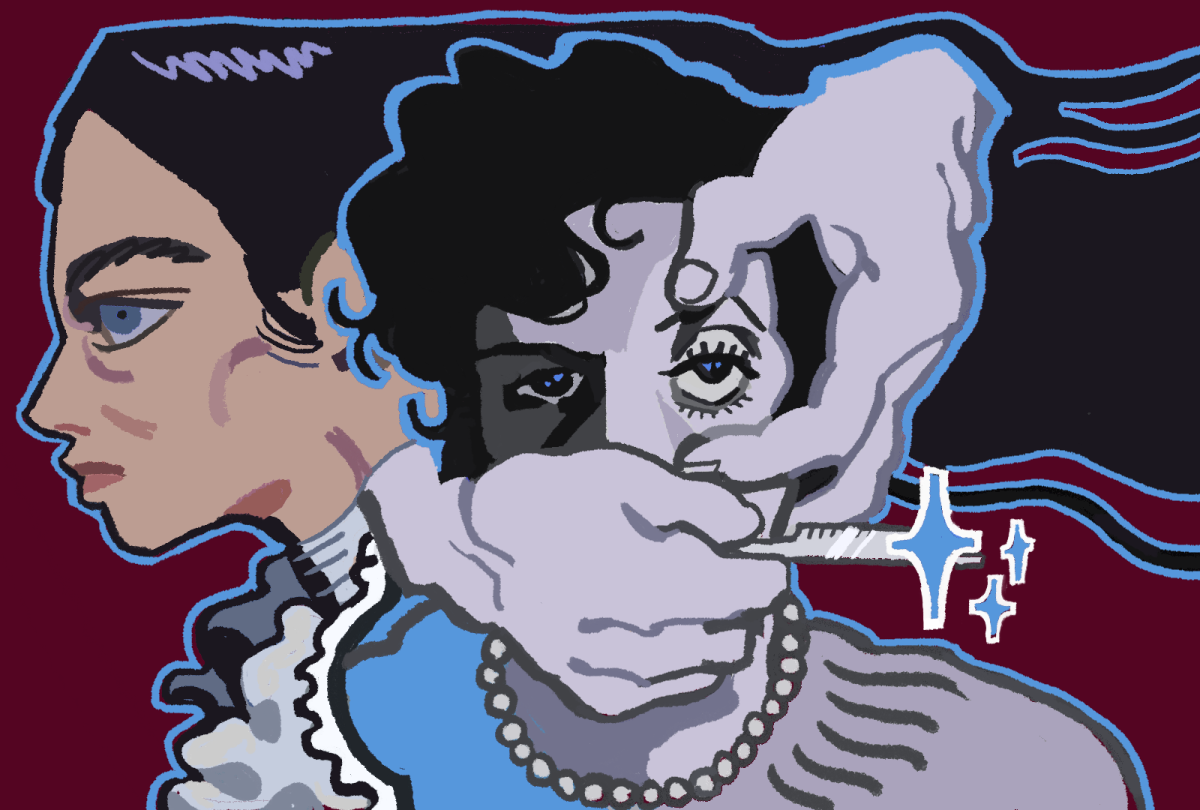A black roof, slick with rain, sheltered a figure cloaked in dark robes, its head veiled by white mesh over a black mask. As this figure soared across the Seine on a zipline, it became a symbol of wonder, marking the beginning of the Paris 2024 Olympics’ opening ceremony that sent shockwaves through the night.
The opening ceremony, with its blend of avant-garde artistry and pointed social commentary, has sparked fierce backlash. Critics, particularly from conservative and religious groups like the Holy See and staunch conservative Speaker of the House Mike Johnson, have condemned the performance as an affront to Christian values. However, this controversy is less about religious offense and more about the resistance to normalizing queer identities and challenging societal norms through art.
Olympic opening ceremonies have long been stages for grand displays of national identity and cultural pride. From Beijing’s meticulously choreographed drummers in 2008 to London’s quirky and nostalgic homage to British pop culture in 2012, these ceremonies historically balance tradition with modernity, often avoiding overt political statements.
However, the Paris 2024 ceremony broke with convention by integrating contemporary social issues, such as LGBTQ representation, into its performance. This approach has received a divisive response, with some spectators celebrating inclusivity and artistic bravery while others decry it as an inappropriate platform for such statements.
A moment that drew significant attention was a tableau that resembled Leonardo da Vinci’s “The Last Supper,” complete with drag performers and a crowned figure at the center. Intended to be a direct homage to the ‘Feast of Dionysus,’ symbolizing the Greek god, this scene ignited controversy with critics from conservative and religious communities viewing this display as deliberate provocation.
The conservative backlash to the opening ceremony is an example of selective outrage, where symbolic gestures are targeted and substantive societal issues are overshadowed. Critics focus on the supposed mockery of religious icons, yet often overlook similar appropriations of religious imagery for political purposes, revealing hypocrisy in how cultural symbols are treated depending on the context and the audience.
When religious symbols are used to rally support for causes, they are praised; when artists use them to make a statement, they are condemned. For instance, political figures in the U.S. have frequently used religious imagery to rally support, such as Ronald Regan’s invocation of the ‘city on a hill,’ taken from the Sermon on the Mount to symbolize American exceptionalism. In contrast, when artists like Madonna used religious symbolism in her music video “Like a Prayer,” which included provocative Christian imagery, she faced backlash from religious groups. The controversy was not just about the supposed blasphemy but also about the video’s challenge to racial and sexual norms, particularly through the portrayal of a Black saint and themes of interracial relationships. The real issue at play is not the supposed mockery of religious icons but an attempt to suppress artistic freedom and the growing visibility of marginalized communities.
At its core, the backlash against the ceremony is less about religious offense and more about resistance to the growing visibility of LGBTQ identities. Including drag queens and other queer performers in such a prominent event is a powerful statement about inclusivity — one that some would prefer to silence. These communities on a global stage are a testament to the progress made over the years, and the fury their presence has incited only highlights the ongoing fight against intolerance.
Not all criticism of the Paris Olympics opening ceremony stems from intolerance. Some religious and conservative individuals felt that the tableau resembling “The Last Supper” crossed a line between artistic expression and cultural appropriation, viewing it as disrespectful to their religious heritage rather than a deliberate provocation. The distinction is important, as concerns about cultural sensitivity differ from accusations of intentional blasphemy. Acknowledging these concerns, Paris 2024 organizers issued an apology, emphasizing that they intended to promote ‘community tolerance’ and celebrate diversity, not to provoke.
Historically, art that challenges the status quo, like Andres Serrano’s “Piss Christ,” was met with widespread outrage, highlighting a broader discomfort with art that disrupts cultural narratives, including those that marginalize certain groups. The criticism of the Paris 2024 ceremony reflects a deeper discomfort with creative expression and the role of art in challenging societal norms. Art is inherently rooted in controversy, meant to make people confront the realities of a system we otherwise find comfort in. It is not meant to be a mirror of comfort but a hammer to the head of society’s conscience.
The outrage sparked by the ceremony is not just about its content but about the audacity of art to question, interpret and provoke. The real sacrilege would be to allow fear and intolerance to dictate the boundaries of artistic expression. Art is, and always will be, a battlefield where the fight for a more inclusive and understanding world is waged. The Paris 2024 Olympics accomplished that by demanding the world confront its biases and consider the diversity that defines our global community.





